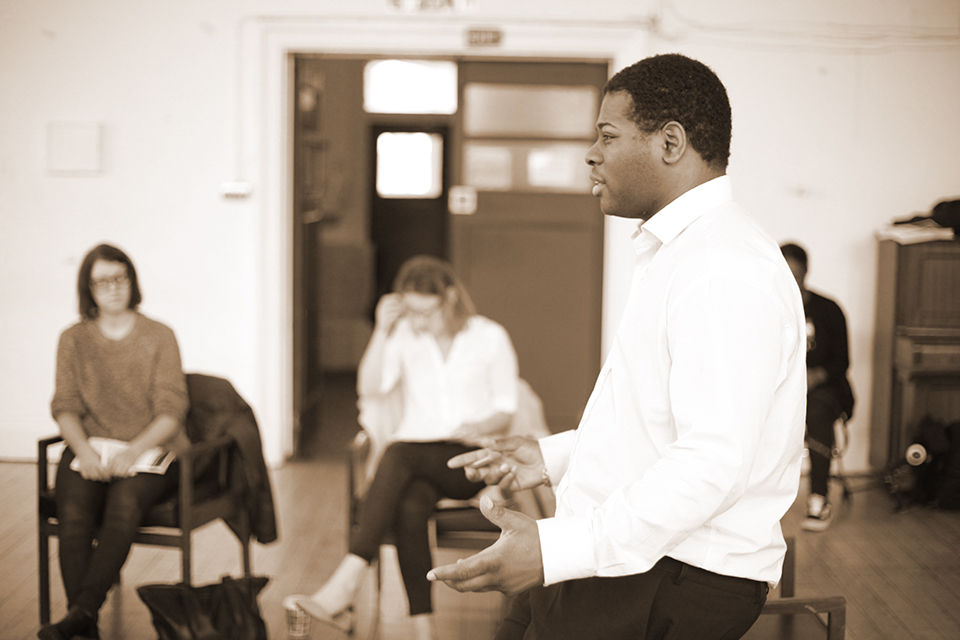How to Use NLP to Build Skills Faster Than the Average Person
- Darren Shaw

- 3 days ago
- 4 min read
Most people think learning takes years. They assume mastery is reserved for the gifted, or that trial and error is the only path to progress. But when neuro-linguistic programming (NLP) first emerged, its purpose was to challenge that idea. At its core, NLP is about modeling excellence—studying how the best in the world think, act, and communicate—so you can replicate their results in a fraction of the time.
In other words: NLP is a framework for accelerated learning.
What NLP Really Offers Beyond Persuasion
Over the decades, NLP became heavily associated with persuasion—sales language, influence tactics, even seduction strategies. While those tools can be useful, they represent only a sliver of what NLP is capable of.
The real gold is in the modeling process. By breaking down how someone achieves results, you can create a blueprint for others to follow. This is where NLP becomes more than a communication skill—it becomes a performance accelerator.
Modeling: The Shortcut to Mastery
Let’s be clear: modeling isn’t imitation. It’s not about copying someone’s surface behaviors, hoping they’ll work for you. Real modeling digs deeper, asking:
What mental strategies does this person use? (How do they process information, set goals, or make decisions?)
What states do they access? (How do they maintain focus, confidence, or calm under pressure?)
What beliefs drive their actions? (What do they believe about themselves, about others, or about success?)
What external behaviors show up consistently? (How do they move, speak, or use language to create results?)
By unpacking these layers, you gain a complete map of excellence that can be practiced, taught, and repeated.
Why Traditional Learning Is Slow
Most people rely on what I’d call “horizontal learning”—collecting more information, piling up techniques, and hoping practice alone will lead to improvement. But information without structure is slow.
NLP flips the process. Instead of starting from theory, it starts from results. You find someone who already excels, decode their structure of success, and practice that directly. This is “vertical learning”—a leap forward instead of a crawl.
A Practical Example: Public Speaking
Imagine two people learning public speaking.
The first joins classes, reads books, memorizes scripts, and practices endlessly. Progress is slow, confidence shaky.
The second spends time modeling a confident speaker. She studies their breathing rhythm, notices how they manage nerves, listens to the words they use to set up stories, and even pays attention to how they visualize the audience in their mind. She doesn’t just copy the gestures—she adopts the inner game of the speaker.
Which learner do you think improves faster? The one building on years of scattered advice, or the one borrowing the mental strategies of someone already excellent?
NLP Tools That Accelerate Learning
Here’s how NLP provides a practical edge in skill development:
1. Submodalities (Fine-Tuning Mental Images)
Submodalities are the building blocks of our inner experiences—the brightness of an image, the volume of a voice in our head, the speed of a mental movie. By changing these details, you can shift how compelling or scary an experience feels. High performers naturally adjust submodalities. With NLP, you can learn to do it consciously.
2. Strategies (Mental Sequences for Success)
Every skill has a sequence of steps—often unconscious—that lead to the result. For example, excellent spellers don’t memorize words phonetically; they visualize them. By modeling strategies, you can install the right sequence instead of struggling with the wrong one.
3. Anchoring (Accessing Powerful States on Demand)
High performers don’t leave their states to chance. NLP anchoring allows you to link specific triggers (like a gesture or word) to peak states of confidence, focus, or creativity. That way, you can reproduce excellence under pressure instead of hoping it “just happens.”
4. Belief Change (Reprogramming Limits)
A performer who believes “I always choke under pressure” will sabotage themselves no matter how much they practice. Modeling includes examining the beliefs that fuel results. NLP techniques allow you to challenge and replace limiting beliefs with empowering ones—critical for consistent performance.
Beyond Skills: Building an Identity of Excellence
At the highest level, modeling excellence isn’t just about learning skills. It’s about shaping identity. When you repeatedly study and adopt the patterns of excellence, you begin to see yourself differently. You stop being “someone learning a skill” and start becoming “the kind of person who performs at this level.”
That’s the real acceleration—when skills become part of who you are.
Why This Matters in Business and Life
In today’s world, speed is an advantage. The market changes fast. Technology evolves fast. Competitors don’t wait. If you rely on slow, traditional learning, you’ll always be behind.
But if you can model the best, you bypass years of trial and error. You gain tools for confidence, decision-making, and communication that most people never touch. And in business, leadership, or personal growth, that advantage compounds.
Bringing NLP Back to Its Roots
NLP was never meant to be a bag of persuasion tricks. It was created to make human excellence transferable. That’s why it’s worth revisiting its roots—because hidden there is a system for accelerated mastery that most people overlook.
The question is simple: do you want to collect tricks, or do you want to build excellence?
If you choose the latter, NLP isn’t just another tool. It’s a competitive edge.


Comments